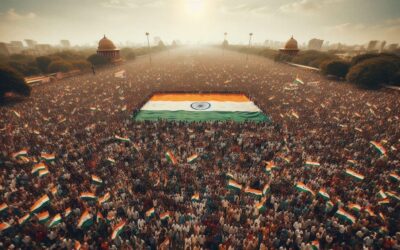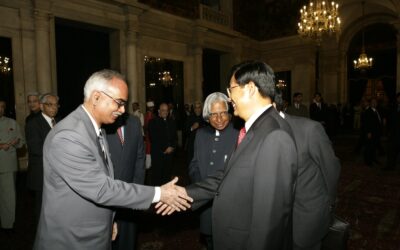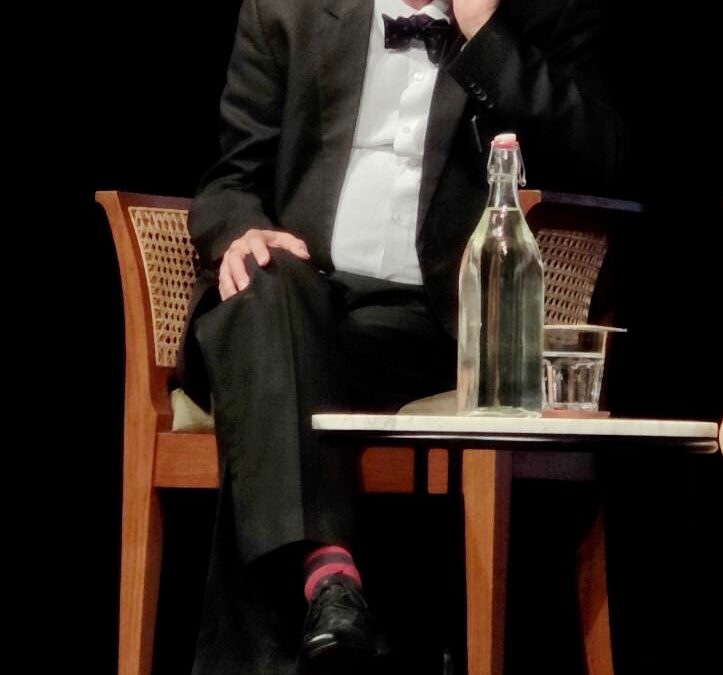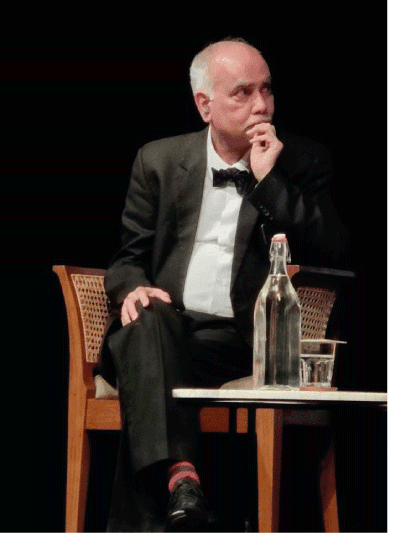In the Katha Upanishad, a parable of the “chariot” elucidates the intricate relationship between the body, the senses, the mind and the self (Atman). The chariot, a metaphor for the body, is akin to a vehicle that ferries the true self through life…

Sculptors of the soul
Sculptors of the soul
Life has its own way of cheering you up. As you grow older, age shows up on your energy levels, the futility of striving for good things stares at you, a feeling of resignation looms large, and then something surprising happens to cheer you up, as if a ‘gift’ has been delivered without any occasion. I received such an invite to address 200 children from the best of the schools in India, Dubai, and Singapore, assembled at the iconic Hyderabad Public School in a keynote address at the concluding event of a five-day camp called The Round Square, organized as part of their centenary celebrations.
I have been living in Hyderabad since early 1982 and had passed by the Hyderabad Public School spaced away from the road by a huge playground fenced by big old trees hundreds of times, glancing at the majestic building, but had never entered inside. I grew up in a lower middle-class setup and never enamored myself by the things that are meant for the elite – including institutions like clubs, hotels, and public schools. Of course, now my grandson studies at Hyderabad Public School and would be a part of the elite upon growing up, God willing.
The Round Square is an international network of schools. German educator Kurt Hahn (1886-1974) founded it in the late 1960s; it started in a round-shaped building in a square area at Gordonstoun in Scotland, from where it derived its name, and then six schools networked to follow Kurt Hahn’s educational concepts. Their network has grown to have 230 schools across 50 countries since then. There are 60+ Round Square schools in India, which encourage students to go beyond academic excellence and strive for personal development and responsibility through service, challenge, adventure, and international understanding.
I was mentored by legendary Dr APJ Abdul Kalam, and it was only natural that I invoked his memory in my speech. Dr Kalam was passionate about interacting with children and made it his mission to visit as many schools as he could. There is no data, but my ballpark estimate is that 20 million children had seen and heard Dr Kalam in their schools. No other leader in the world had done it before him or after him. So, while interacting with the students, I invoked his memory and imagined what he would have said on this occasion about the cultivation of gratitude and patience in life. Sabr and Shukr are like the two wings of a bird to fly over this world full of suffering, as Buddha called it. I exhorted children to feel thankful for whatever they already had and to cultivate patience without getting agitated for all that they wished to have in their lives.
Hyderabad Public School has a great tradition. Satya Nadella, Shantanu Narayen, T K Kurien, and Harsha Bhogle studied here. Three students later became Chief Ministers, and many became Union Ministers. I wondered what if the Prime Minister of post-2050 India was sitting there that day. And why not a girl? When I said it, there were loud cheers and I have no words to describe the positive energy that was palpable in the way children were conducting themselves – sitting attentively, walking buoyantly, and making eye contact while interacting.
Good schools are essential in society. American social reformer Frederick Douglass (1818-1895) famously said, “It is easier to build strong children than to repair broken adults.” A lot has been done in independent India in this direction. There are good schools in every town and primary education has reached most of the 600,000 Indian villages.
In the Round Square schools, six ideals are fostered among the students – International Understanding, Democracy, Environmental Stewardship, Adventure, Leadership, and Service – making an acronym of IDEALS. The principal, a dual Master of Sanskrit and English, from Agra in Uttar Pradesh, personified the education of New India – anchored in a 5 millennia-old civilization and aspiring to lead the world in the 21st century. Listening to him – a baritone voice, flowing like a symphony – was indeed surreal.
Why is good education for children important? Three fundamentals come to my mind – social skills, personal growth, and the expansion of consciousness. Every child is conditioned by his family atmosphere and, unless exposed to other children, runs the risk of growing up as a dysfunctional adult in the society. In schools, children learn to interact socially with others outside of their family and the wider community. By interacting with children of different backgrounds, genders, and beliefs only one can be free from risky prejudices.
Education instils discipline, which aids in a child’s ability to maintain concentration. The foundation for prospects for future growth is laid by children’s education. The periods of teaching different subjects, intervals for biological breaks and food, assembly, sports, music, arts, and above all, the cultivation of civility, prepare a child to become a competent and productive adult. Educational programs today are made that way. Children can develop emotional and mental fortitude through schooling, which benefits them in their later lives.
Perhaps the most important fundamental is the expansion of consciousness. By raising the consciousness of their students to the next level, good teachers indeed act like sculptures of the soul. Swami Vivekananda has said, “We are magicians waving magic wands and creating scenes before us at will. We are the spider in his huge web, who can go on the varied strands wheresoever he desires. The spider is now only conscious of the spot where he is, but he will in time become conscious of the whole web. We are now conscious only where the body is, we can use only one brain; but when we reach ultra-consciousness, we know all, we can use all brains.” (Complete Works v. 7 p. 15)
Once the consciousness of a child is expanded – from the confinement of “I” and “mine” to “we” and “ours” – the behaviour of the child is automatically changed for rest of his life. Hyderabad Public School is doing it – enthusiastically and effectively I must add – and it was evident that evening. In the book You Are Born to Blossom, where Dr Kalam gave me an opportunity to co-author, he writes, “The management of knowledge must move out of the realm of the individual into the networked groups.” (Chapter 7). I could see this truth shining through The Round Square.
MORE FROM THE BLOG
Warriors of Light
Multitude
Certain concepts are embedded in ancient wisdom, guiding generations, and the idea of the multitude is one such concept. In the national anthem of India, written by Gurudev Rabindranath Tagore (1861-1941), the multitude is hailed as the absolute sovereign…
Four Nos and Four Yeses
Had India and China been friends, the 21st century would already have been Asian. With peace within itself, being vastly more developed, and flourishing regional trade, what is not there on this planet that is not here?…








 The sense of “I” is the greatest deception that mankind is condemned to. Talk to anyone and you hear the story of obsession with money, power, name, fame, attachments, achievements, love, and dependency. We live a life driven by our likes and dislikes. Every moment we are moving “towards what we like and love” and “away from what we dislike and fear.” We put ourselves in the center and look at the world as a great circle, disappearing into the unknown beyond a point. The more we think about it, the scarier it gets. Is the situation so bad, or there is a problem within our own selves?
The sense of “I” is the greatest deception that mankind is condemned to. Talk to anyone and you hear the story of obsession with money, power, name, fame, attachments, achievements, love, and dependency. We live a life driven by our likes and dislikes. Every moment we are moving “towards what we like and love” and “away from what we dislike and fear.” We put ourselves in the center and look at the world as a great circle, disappearing into the unknown beyond a point. The more we think about it, the scarier it gets. Is the situation so bad, or there is a problem within our own selves?